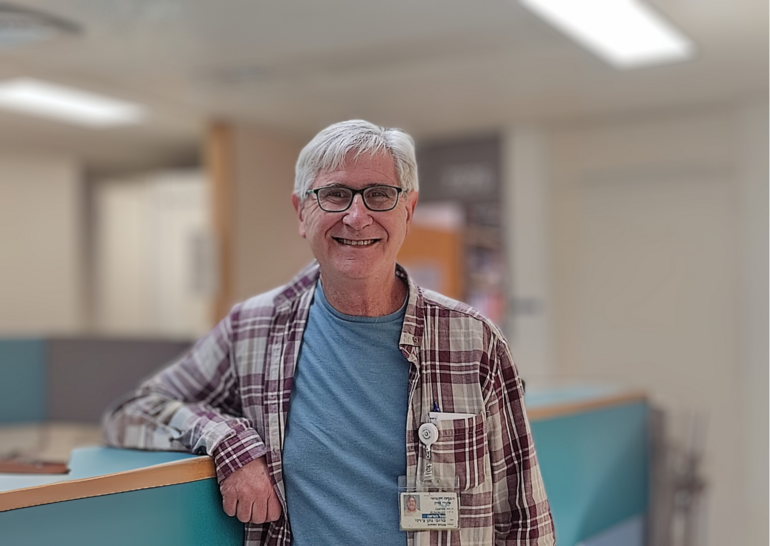Discrepancies in anti-cancer drug approvals around the globe are even bigger in low- and middle-income countries, raising some questions about how they impact on patients’ access to quality cancer care.
In May 2020, the MET kinase inhibitor, capmatinib, was approved by the US Food and Drug Administration (FDA) to treat patients with metastatic non-small cell lung cancer (NSCLC) whose tumours carry the METex14 driver mutation. Since then, it has been approved in Japan, Switzerland, India, Hong Kong, Taiwan and Brazil. However, oncologists in most of Europe are still awaiting capmatinib’s approval by the European Medicines Agency (EMA).
“It means that patients with this type of lung cancer cannot be treated with the optimal medicine and it probably results in unnecessary loss of patient life years,” says Prof. Jürgen Wolf, Centre for Integrated Oncology, University Hospital of Cologne, Germany, who led the GEOMETRY trial of capmatinib. “In academic centres we may be able to treat patients off-label after importing the drug if a private insurance company will pay for it, but this is not easy for the majority of oncologists in Europe.”
A recent analysis of 88 innovative or new formulation oncology medicines approved by the FDA in the last five years showed that 48 were approved by the EMA a median eight months after US approval (Pharmaceutical Technology, May 2021). In Asian countries, the discrepancy was even larger: 26 were approved in Japan and 12 in China, a median 12.5 months and 31.5 months respectively after the US decision.
Dr. Bishal Gyawali, Queen’s University, Kingston, Canada, who first proposed a “cancer groundshot” in 2016, focused on affordable, cost-effective interventions implemented globally (Lancet Oncology 2018; 19: 288-290), points out: “It is acknowledged that the FDA sets a low bar for approval, so almost all new cancer drugs are available first in the USA, and regulatory delays in other parts of the world may be huge. However, we should not advocate fast-track approval for all new agents, we need to be sure that patients will live longer and better. There is no point in getting quick access to drugs that do not help patients and give them side-effects.”
One example was olaratumab which was fast tracked by the FDA and the EMA for treatment of soft tissue sarcoma in 2016 but withdrawn in 2019 when it failed to improve survival (FDA, 2019; EMA, 2019). “Some regulatory delays actually benefit patients. In the case of olaratumab, several countries never had access to the medicine but I do not think they missed out and, most importantly, they did not spend money on it,” adds Gyawali.
Efforts to speed up approvals
In 2019, the FDA Oncology Center for Excellence (OCE) established Project Orbis which provides a framework for concurrent submission and review of oncology drugs. Participating countries now include Australia, Canada, Singapore, Switzerland and the UK. Drug applications submitted to the FDA and participating countries within 30 days of each other have the best chance of decisions being made at a similar time (Medicines and Healthcare products Regulatory Agency, 2020). Cancer drugs including lenvatinib, pembrolizumab and osimertinib have benefited from the scheme.
In addition, both the FDA and the EMA have procedures to speed up access to important new medicines including approvals that require subsequent confirmatory trials.
“I like the conditional approval because it allows faster access but requires additional safety data in one or two years. This seems a good option to reduce delays while still ensuring the safety of new treatments,” says Wolf.
Gyawali is not so sure – pointing to a recent analysis suggesting that a third of cancer medicines fast tracked by the FDA remain on the market after failing to confirm efficacy in post-approval trials (BMJ 2021; 1 Sep 8;374:n1959). “There is a lot of complexity to withdrawing treatments that have been approved, and some that failed confirmatory trials are still on the market,” he says.
Even so, there is evidence that some potentially important new cancer medicines miss out on fast-track processes. An analysis of drug approvals for breast cancer by the FDA and EMA between 1995 and 2018 showed that, of the 25 FDA-approved drugs, 19 benefited from procedures to speed up approvals, but none of the EMA-approved drugs benefited from such procedures (Cancers (Basel) 2020; 12 (2): 437).
In France, regulators have addressed EMA delays by introducing their own expanded access (ATU) system which allows medicines to be used before EMA approval under limited criteria. Between 1 January 2007 and 31 December 2019, 25 of 36 cancer drugs received ATU approval for early use prior to regulatory approval (Eur J Cancer 2021; 149: 82-90). This occurred an average 203 days before FDA approval and 428 days before EMA approval.
Wolf attributes slower approvals of novel cancer drugs in Europe to a difference in philosophy between the FDA and the EMA, with the FDA focused on providing effective treatment for patients with life-threatening diseases and the EMA tending to prioritise drug safety.
“I would like the EMA to have a more progressive attitude, like the FDA. In the era of personalised medicine, we are often using targeted drugs in sub-groups of patients with relatively rare mutations, so safety cohorts are smaller than in the era of large Phase 3 trials of chemotherapy,” says Wolf. “We need to strike a balance between efficacy and safety and my experience with cancer support groups is that patients prioritise access to effective new medicines because their tumours are more toxic to them than their treatment,” he adds.
Capmatinib: FDA accepted Phase 2 data, but not EMA
In the USA, capmatinib received accelerated approval, based on overall response rate (ORR) and duration of response (DoR) data from the Phase 2 GEOMETRY mono-1 trial (N Engl J Med 2020;383:944-57). Wolf explains that, initially, this was not enough for the EMA which requested a Phase 3 comparative trial of capmatinib and docetaxel in patients with relapsed Stage IIIb/IIIc or IV METex14 NSCLC. However, recruitment is proving difficult.
“We were the best recruiting centre for the GEOMETRY mon-1 trial but it is very hard to find patients who are prepared to be randomised to the control arm in this new study, because they are aware of the growing amount of data supporting capmatinib,” says Wolf.
GEOMETRY mono-1 has now shown median overall survival (OS) of nearly 21 months in treatment-naïve patients (J Clin Oncology 2021; 39(15) suppl: abstract 9020) and quality of life benefits (J Clin Oncology 2021; 39(15) suppl: abstract 9056). This compares with 12 months typically seen with chemotherapy, says Wolf. He hopes that the growing evidence will now enable the EMA to look more favourably at capmatinib, and be more open to Phase 2 data in the future.
LMICs: a special case?
Although it is unlikely that approval discrepancies affect cancer research in high-income countries, according to both Wolf and Gyawali, delayed access to a treatment in low- and middle-income countries (LMICs) may affect the type of standard-of-care options used as comparators in clinical trials in those countries.
“For example, standard-of-care treatment of prostate cancer in the USA and Canada now includes several newer agents that are not available in countries such as India and Sri Lanka. So, there is a risk of sub-optimal outcomes in the control arm in some countries and this may affect overall clinical trial outcomes,” explains Gyawali.
In some countries, regulatory delays arise because local studies need to address differences in population characteristics compared to US and European trial patients, Gyawali explains. In addition, in LMICs, there may be little or no regulatory infrastructure and, if populations are small, there is little incentive for pharmaceutical companies to apply for approval.
“One option would be for LMICs with similar patient demographics, such as those in the Indian sub-continent, to form alliances to coordinate regulatory systems – rather like Project Orbis – to achieve approval and to negotiate prices of new drugs,” says Gyawali.
Even when countries contribute to clinical trials of new agents, there can be long delays before those drugs are approved (JAMA Network Open 2021; 4 (5) e217075). Of the 70 countries contributing patients for FDA-approved drugs in 2012 and 2014, only five – all of them high-income countries – achieved access within one year of FDA approval. At five years, 18 of 39 high-income participating countries had access to drugs they helped test, compared to two of 22 upper-middle income countries and two of nine LMICs. Access was lowest in African countries.
As a member of the WHO Essential Medicines List Cancer Medicines Working Group, Gyawali is concerned that some LMICs do not have access even to classical cytotoxic agents. “Just because a new drug is approved in the USA does not mean that every country must have it. Some countries do not even have access to drugs with good outcomes that were approved in the 1990s, so it is important that these are more widely approved and available first,” he concludes.





